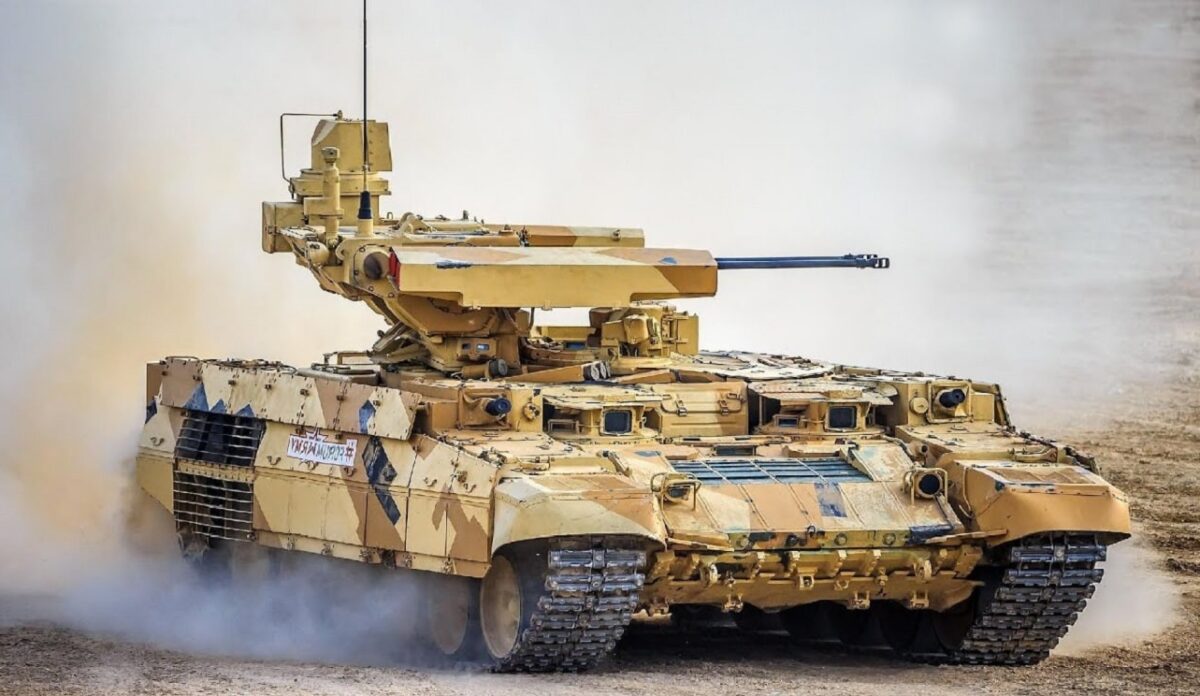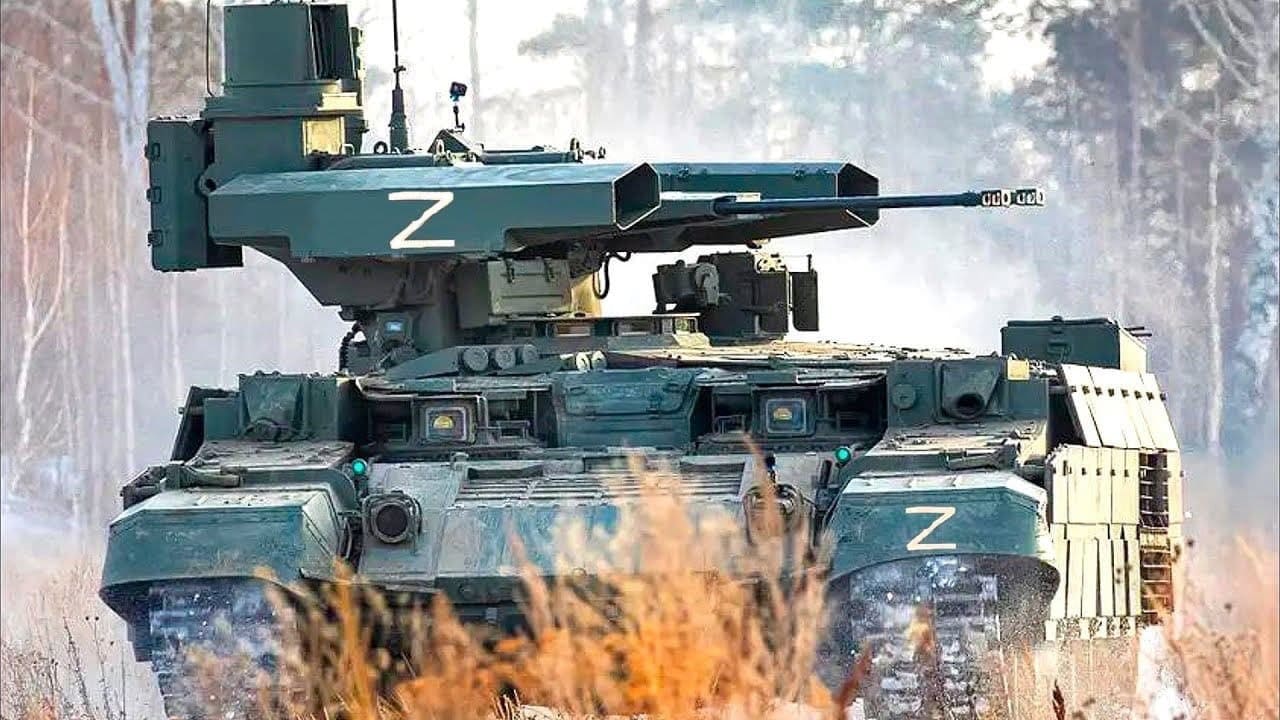In May, images of a “platoon” of Russia’s highly-touted BMPT “Terminator” armored fighting vehicles circulated on social media. The Terminators, which were developed to support Russia’s tanks and other AFVs in urban environments, had reportedly been sent to the Donbas region of Eastern Ukraine.
The British Ministry of Defence had been monitoring the movements of the only operational company of the BMPT tank support vehicles, and it had been suggested that the BMPTs were deployed to aid in a Russian breakthrough. The arrival of the Terminators was also praised by some in the Russian media.
“Thank God! We’ve got Terminators!,” wrote pro-Kremlin reporter Aleksandr Sladkov in late spring, The New York Post had reported.
In the more than two and a half months since then, there has been no breakthrough and Russia is now facing a military quagmire – having seen more men killed in the fighting in less than six months of fighting than the Soviet Union lost in its decade-long war in Afghanistan, and more than triple the U.S. losses in Afghanistan and Iraq combined.
Sladkov and other Kremlin-backed media sock puppets have been silent on exactly what the Terminators have brought to the fighting. Though Kyiv hasn’t claimed to have destroyed any Terminators, Moscow hasn’t ballyhooed any of the vehicles’ successes.
Rather than living up to the hype, the name brings – something along the lines of an unstoppable fighting machine seen in the 1984 science fiction classic The Terminator or its 1991 sequel epic Terminator 2: Judgment Day, the actual vehicle has apparently seen all the success of the other forgettable sequels (which we won’t even bother to name here).
Lessons Not Learned?
The mobile AFV was designed based on combat lessons gained during the Soviet-Afghan War of the 1980s, and later during the First Chechen War in the mid-1990s. In theory, it was likely the right weapon for those conflicts.
Unlike the fictional “Terminators,” which were autonomous anthropomorphic warriors, the BMPT is an armored vehicle. Built on the chassis of a T-72 main battle tank (MBT), it was developed to serve in a support role for tanks and other armored fighting vehicles in urban areas. The “Terminator” – a moniker that is technically unofficial but is apt given the platform’s guardian/hunter role – is a multi-purpose heavily armored and armed tracked fire support fighting vehicle that offers powerful armament, advanced fire control instruments, and high maneuverability.
Each is armed with twin autocannons capable of firing 600 rounds per minute – with one firing armor-piercing rounds while the other fires anti-personnel rounds. It is also equipped with missiles to take out tanks, helicopters, and even planes.
The 53-ton, 23ft long, 1,000 horsepower behemoths were purpose-built for fighting in cities as support tanks alongside the main armored columns. Again, in theory, it could fill such a role perfectly against insurgent forces or a significantly weaker enemy. Instead, Ukraine has proven itself to be a near-peer adversary to Russia, and its brave warfighters have successfully employed man-portable anti-tank weapons with stunning success.
The Terminator might be good for mowing down an enemy that would make a rash direct assault on a tank column, but Ukraine’s fighters have employed loitering munitions and utilized hit and run tactics with a variety of anti-tank weapons.
More importantly, much of the fighting is in the rugged terrain outside the urban centers, and it seems the Terminator is less well-suited to such an environment. In addition, the fighting has transitioned into an artillery slug match at distance in some parts of the region – where this simply isn’t the right vehicle for the job.

Terminator Tank from Russia. Image Credit: Creative Commons.
Perhaps, if the fighting is concentrated in urban centers, such as if the Russian Army was to mount another assault against Ukraine’s western cities, or if Moscow is driven back in Crimea and must defend Sevastopol, then the Terminator might “be back.”
A Senior Editor for 1945, Peter Suciu is a Michigan-based writer who has contributed to more than four dozen magazines, newspapers and websites. He regularly writes about military hardware, firearms history, cybersecurity and international affairs. Peter is also a Contributing Writer for Forbes. You can follow him on Twitter: @PeterSuciu.

